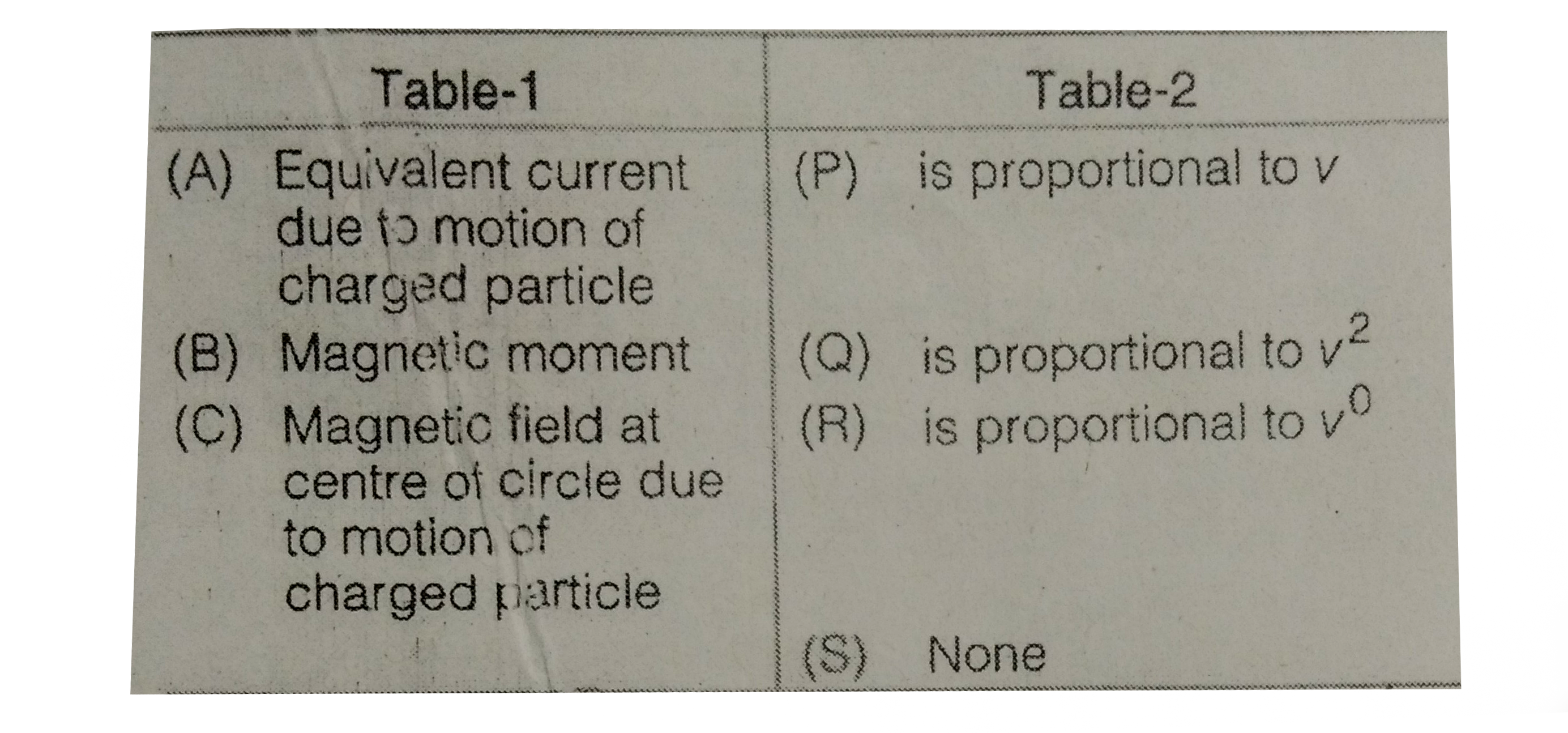A charged particle is moving in a circular orbit of radius 6 cm with a uniform speed of 3×x106 m/s under the action of a uniform magnetic field 2×10−4wb/m2 at right angles to the plane of the orbit. The charge to mass ratio of the particle is
5×109 C /kg
2.5×1011 C/kg
5×1011 C /kg
5×1012 C/kg
The correct Answer is:B
To find the charge to mass ratio (Q/M) of a charged particle moving in a circular orbit under the influence of a magnetic field, we can follow these steps:
1. Identify Given Values:
- Radius of the orbit (r) = 6 cm = 6 × 10^(-2) m
- Speed of the particle (v) = 3 × 10^(6) m/s
- Magnetic field (B) = 2 × 10^(-4) Wb/m²
2. Use the Formula for Radius of Circular Motion in a Magnetic Field:
The radius of the circular motion of a charged particle in a magnetic field is given by the formula:
r=mvqB
where:
- m = mass of the particle
- v = velocity of the particle
- q = charge of the particle
- B = magnetic field strength
3. Rearranging the Formula to Find Charge to Mass Ratio:
We need to find the charge to mass ratio (Q/M). Rearranging the formula gives:
qm=vrB
4. Substituting the Known Values:
Now, substituting the values we have:
qm=3×106(6×10−2)(2×10−4)
5. Calculating the Denominator:
First, calculate the denominator:
(6×10−2)(2×10−4)=12×10−6=1.2×10−5
6. Calculating Q/M:
Now substitute this back into the equation:
qm=3×1061.2×10−5=31.2×106+5=2.5×1011
7. Final Result:
Therefore, the charge to mass ratio of the particle is:
qm=2.5×1011C/kg
- Radius of the orbit (r) = 6 cm = 6 × 10^(-2) m
- Speed of the particle (v) = 3 × 10^(6) m/s
- Magnetic field (B) = 2 × 10^(-4) Wb/m²
The radius of the circular motion of a charged particle in a magnetic field is given by the formula:
r=mvqB
where:
- m = mass of the particle
- v = velocity of the particle
- q = charge of the particle
- B = magnetic field strength
We need to find the charge to mass ratio (Q/M). Rearranging the formula gives:
qm=vrB
Now, substituting the values we have:
qm=3×106(6×10−2)(2×10−4)
First, calculate the denominator:
(6×10−2)(2×10−4)=12×10−6=1.2×10−5
Now substitute this back into the equation:
qm=3×1061.2×10−5=31.2×106+5=2.5×1011
Therefore, the charge to mass ratio of the particle is:
qm=2.5×1011C/kg
Topper's Solved these Questions
- BOOK - ERRORLESSCHAPTER - MAGNETIC EFFECTS OF CURRENT EXERCISE - NCERT BASED QUESTIONS (Force and Torque on a Current Carrying Conductor )51videos
MAGNETIC EFFECTS OF CURRENT
- BOOK - ERRORLESSCHAPTER - MAGNETIC EFFECTS OF CURRENT EXERCISE - PAST YEARS QUESTIONS48videos
MAGNETIC EFFECTS OF CURRENT
- BOOK - ERRORLESSCHAPTER - MAGNETIC EFFECTS OF CURRENT EXERCISE - ASSERTION & REASON18videos
MAGNETIC EFFECTS OF CURRENT
- BOOK - ERRORLESSCHAPTER - ELECTROSTATICSEXERCISE - ASSERTION & REASON25videos
ELECTROSTATICS
- BOOK - ERRORLESSCHAPTER - MAGNETISMEXERCISE - Assertion and Reason22videos
MAGNETISM
Similar Questions
Knowledge Check
- Question 1 - Select One
If a charged particle having charge q is moving in a circular path of radius R with a uniform speed u, what would be the magnetic field at the centre?
Aμ0qv2πR2Bμ0qv3πR2Cμ0qvπR2Dμ0qv4πR2 - Question 2 - Select One
A particle is moving along a circular path of radius 5 m with uniform speed of 5m/s. What will be time taken by the particle in half revolution?
Aπ/2sB2πsCπsD3π/2s - Question 3 - Select One
A charge particle (charge q ) is moving in a circle of radius R with uniform speed. v The associated magnetic moment m is given by
AqvR2BqvR2/2CqvRDqvR/2
An electron is revolving in a circular path of radius 2×10−10 m with a speed of 3×106 m/s. The magnetic field at the centre of circular path will be-
View SolutionA particle moves in a circle of radius 1.0cm under the action of a magnetic field of 0.40T.An electric field of 200V/m makes the path straight.Find the charge/mass ratio of the particle.
View SolutionA charge particle is moving in a plane perpendicular to uniform magnetic field, then
View SolutionThe electron in a hydrogen atom moves in circular orbit of radius 5×10−11m with a speed of 0.6π×106m/s then
View SolutionA particle is moving along circular path of radius 40 m with a uniform speed of 20m/s. Then the time taken for the particle to complete half revolution will be
View Solution


